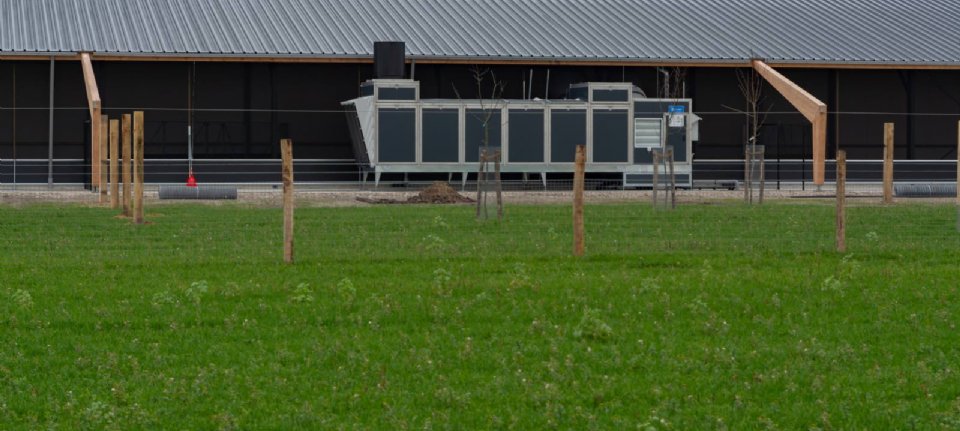Goal control is one possibility. This does not have to be done using ammonia sensors; This can also be done in two other easily controlled ways, according to research conducted in a poultry house by Wageningen Research University and Vincomatic. This principle can be applied to all chemical washes.
The research was conducted in a broiler house equipped with Vencomatic’s ECO Air system. This system removes ammonia and dust from the stable air and blows clean, conditioned air into the stable. Here ammonia bonds with acid to form ammonium sulphate. The system achieves a minimum of 85 percent ammonia reduction and captures 80 percent of particulates.
The degree of ammonia reduction for the study was determined using three methods. Emissions in the stable were measured using four ammonia sensors. At two of the four washing facilities, the ammonia concentration in the air was measured before and after passing through the unit. Second, acid consumption was measured. In principle, the consumption of this acid has a constant relationship to the amount of bound ammonia.
Third, the nitrogen concentration in the wash water and the amount of wash water drained were measured. The research was conducted by agricultural technology professor Peter Groot Koerkamp from Wageningen University and Research, in collaboration with product manager Victor van Wagenberg from Vincommatic. The results of the three measurement methods were compared during four periods of one month each.
Target guidance is possible
This research demonstrates that ammonia reduction in a system can be easily measured using all three methods. There are similarities between the results when measuring with ammonia sensors and measuring acid consumption and nitrogen content in the wash water. This has many positive results.
First, it allows for target control. Since ammonia reduction by a scrubber can be accurately measured using several methods, a company’s total emissions over a period can be determined. Uniform stable emissions are used according to the emission factors of the Ammonia and Livestock Regulations (RAV).
Poultry farmers can use one or more of these methods to account for existing ammonia emissions. This is essential if you will be working with Target Regulation Permits with a cap on ammonia emissions.
Press passes
Existing permits for ranchers are currently under pressure because they are based on RAV emissions factors. The judge more or less decided that current RAV emission factors and reductions cannot be used to grant permits, because those numbers are averages that can vary widely.
As a result, actual emissions from the stabilizer can deviate significantly from the RAV standard. This means that more and more ammonia/nitrogen can end up in a nearby nature reserve.
The government can get to work
Through additional measurements of ammonia emissions via sensors, and acid and/or nitrogen consumption in the wash water, the uncertainty surrounding ammonia emissions can be significantly reduced. According to Groot Koerkamp, this creates “space” to base the granting of permits on the basis of targeted regulations and actual emissions from the stable. But this will have to be further developed and initiated by national, regional and local governments.
Second, this research shows that it is not strictly necessary to measure ammonia emissions on a poultry farm using ammonia sensors. This can also be done in one of two other ways. Ammonia sensors are very sensitive to faults, need to be calibrated regularly and are expensive.
Measuring ammonia emissions by acid consumption and/or nitrogen content in wash water is less sensitive to faults and less expensive. The rancher can then see in the wash water whether the system is working properly and make timely adjustments. In addition, the numbers can be read remotely, allowing government agencies to verify livestock breeders’ compliance with the permit.
Applies to chemical washing machines
In principle, measuring acid consumption and nitrogen content in wash and waste water can be used throughout the year for all types of chemical and acid air purifiers. “It should be noted that the current conclusion is based on a single poultry stable,” says Groot Koerkamp.
“This research was conducted over four full one-month measurement periods, so the results are reliable. To prove this conclusion on a larger scale, it should now be continued and extended to other types of poultry and pig stables, to prove that these methods work as well.”

“Total coffee specialist. Hardcore reader. Incurable music scholar. Web guru. Freelance troublemaker. Problem solver. Travel trailblazer.”







More Stories
GALA lacks a chapter on e-health
Weird beer can taste really good.
Planets contain much more water than previously thought